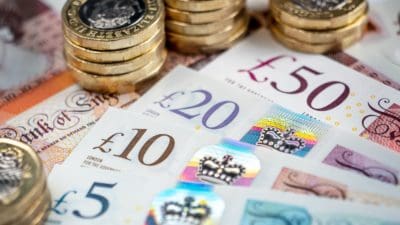Every quarter I take a look at the largest FTSE 100 companies in each of the index’s 10 industries to see how they shape up as a potential “starter” portfolio.
The table below shows the 10 industry heavyweights and their current valuations based on forecast 12-month price-to-earnings (P/E) ratios and dividend yields.
| Company | Industry | Recent share price (p) | P/E | Yield (%) |
| ARM Holdings | Technology | 1,037 | 29.9 | 0.9 |
| BHP Billiton (LSE: BLT) | Basic Materials | 1,249 | 18.8 | 6.4 |
| British American Tobacco | Consumer Goods | 3,415 | 15.6 | 4.7 |
| GlaxoSmithKline (LSE: GSK) (NYSE: GSK.US) | Health Care | 1,322 | 15.7 | 6.1 |
| HSBC Holdings | Financials | 570 | 10.5 | 5.9 |
| National Grid | Utilities | 817 | 13.8 | 5.4 |
| Rolls-Royce | Industrials | 870 | 14.3 | 2.9 |
| Royal Dutch Shell (LSE: RDSB) (NYSE: RDS-B.US) | Oil & Gas | 1,807 | 12.2 | 6.6 |
| Vodafone | Telecommunications | 230 | 39.7 | 5.1 |
| WPP | Consumer Services | 1,426 | 14.4 | 3.2 |
Historically, to get a feel for overall value, I’ve tracked the average P/E and yield of the “portfolio”, but excluding ARM with its typically lofty technology-sector valuation. However, for the past 18 months — since its mega-sale of Verizon Wireless — Vodafone’s valuation has also been anomalously high.
The table below shows the average portfolio P/E and yield at my quarterly review dates, including Vodafone (columns two and three) and excluding Vodafone (columns four and five).
| P/E | Yield (%) | P/E | Yield (%) | |
| July 2015 | 17.2 | 5.1 | 14.4 | 5.2 |
| April 2015 | 17.2 | 4.9 | 14.9 | 4.8 |
| January 2015 | 15.8 | 4.8 | 13.5 | 4.8 |
| October 2014 | 15.0 | 4.7 | 13.1 | 4.6 |
| July 2014 | 14.8 | 4.7 | 13.2 | 4.5 |
| April 2014 | 13.6 | 4.6 | 12.8 | 4.6 |
| January 2014 | 13.6 | 4.5 | 12.7 | 4.5 |
| October 2013 | 12.2 | 4.7 | 12.1 | 4.7 |
| July 2013 | 11.8 | 4.7 | 11.9 | 4.6 |
| April 2013 | 12.3 | 4.6 | 12.4 | 4.4 |
| January 2013 | 11.4 | 4.9 | 11.7 | 4.6 |
| October 2012 | 11.1 | 5.0 | 11.1 | 4.7 |
| July 2012 | 10.7 | 5.0 | 10.7 | 4.7 |
| October 2011 | 9.8 | 5.2 | 9.8 | 5.0 |
My rule of thumb for the group of companies is that an average P/E below 10 is bargain territory, 10-14 is decent value, while above 14 starts to move towards expensive.
Last quarter I highlighted the growing disconnect between P/E and yield, suggesting:
“It may be that we’ll see a period of little or no dividend growth among the heavyweights (or even a rebasing of some dividends) to bring the yield down to a level that better reflects the high P/E and a low interest-rate environment in which other assets are yielding very little”.
This is starting to happen, although the average yield currently remains high. Since my April review, GlaxoSmithKline has announced it is pegging its dividend at an unchanged 80p a share for the next three years, while Shell has suggested its dividend may be flat at $1.88 for the next two years.
Nevertheless, I’d say the visibility these two companies have given us on their dividends and their high yields (Glaxo, 6.1% and Shell 6.6%) make them attractive for long-term investors at current price levels. Glaxo expects to return to earnings growth in 2016, guiding on annual growth for the period 2016-20 of mid-to-high single digits. Shell’s in-progress acquisition of BG Group should also drive earnings growth further down the line.
Miner BHP Billiton is another company where the short-term outlook is uninspiring, but the longer-term prospects much brighter. Billiton’s P/E of 18.8 is high, but, counterintuitively, high P/Es for miners can signal good times ahead for the share price and low P/Es the reverse. Three years ago, Billiton’s P/E was just 7.6 at a share price of 1,806p; the shares are now trading at 1,249p. Billiton’s current yield of 6.4% is also attractive, although the dividend may be vulnerable to the same lack of near-term growth as Glaxo and Shell, or even a re-basing.
Elsewhere, ARM, National Grid and HSBC, which I highlighted for you last quarter, continue to look attractive. ARM’s current P/E has dipped below 30 for the first time since I’ve been tracking the shares. National Grid’s P/E and yield are at value levels not seen since my October 2013 review. HSBC continues to have the lowest P/E of all 10 companies and a well-above-average yield.







